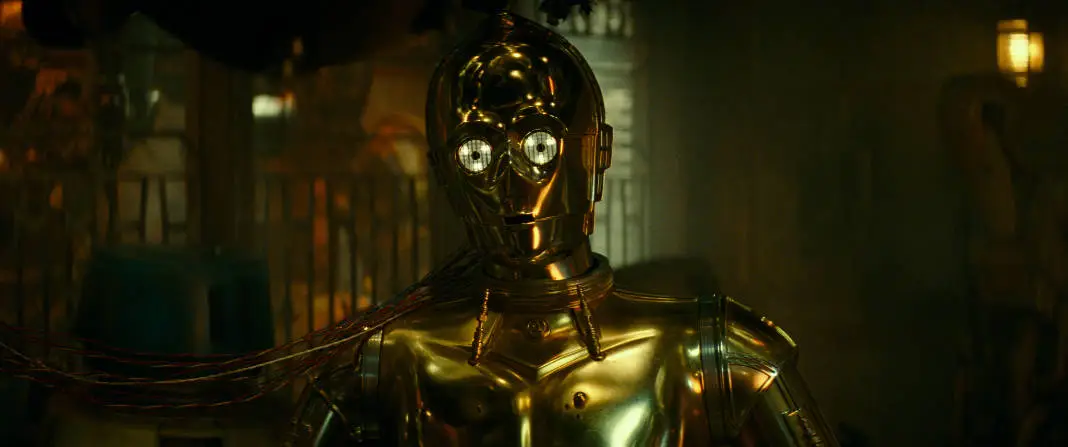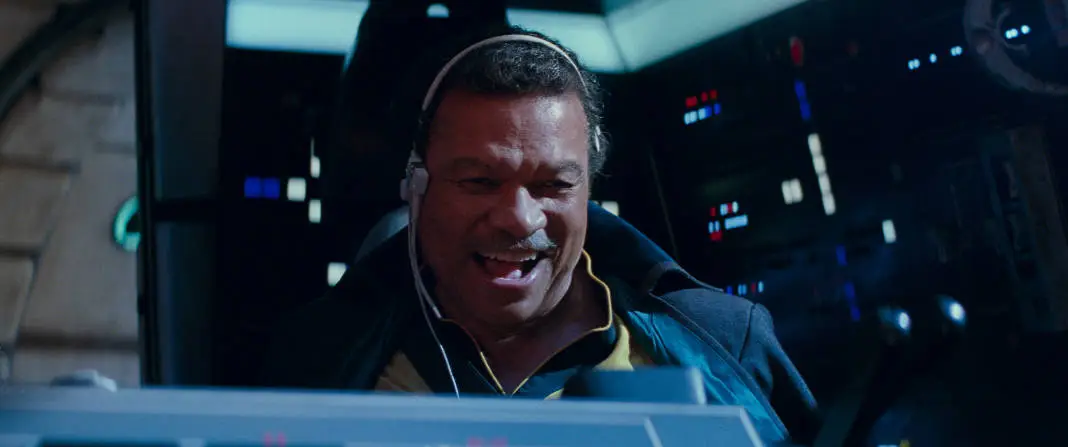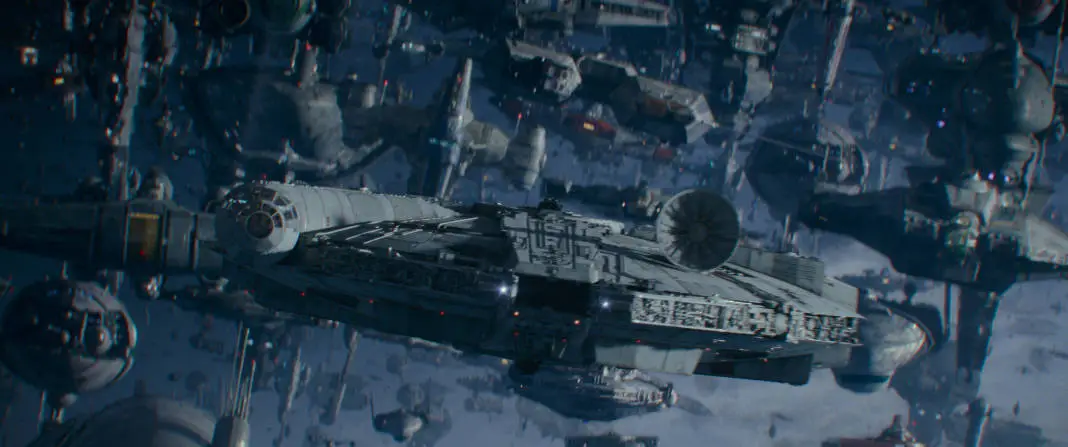In the run-up to the release of Star Wars: The Rise of Skywalker and the end of the Skywalker Saga, we took a look back at all of the Saga films and re-evaluated them and their legacy as a whole.
You can start at the beginning with A New Hope by clicking here.
Star Wars: Episode IX The Rise of Skywalker
We come to it at last: the final Star Wars saga film (maybe?). After forty-plus years of inspiration, innovation, experimentation, and exasperation, the note the series will reach some sort of milestone on is one of… convention.
First of all, let’s be clear, this is not the end of Star Wars or even the episodic saga. The commercial reality of the series as it exists now means at the first sign of weakness in other aspects of the franchise, the Skywalker Saga will be returned to in a search for stability and fan acceptance as the choices in The Rise of Skywalker make abundantly clear.
The Last Jedi left the current run of the films at something of a crossroads. Though still hopelessly chained to the elements of the original films, it had severed the most ardent connections and pointed to a way forward to the type of challenging filmmaking the series used to be known for. But would that challenge be taken up?

After much behind-the-scenes consternation, the baton was passed back to The Force Awakens director J.J. Abrams and, with it, that film’s philosophy on the series. Whereas the early episodes of the saga were a catch-all of different influences stewed together referencing many different aesthetics and story types, The Force Awakens only seems able to reference Star Wars. It is the definition of derivative that makes The Rise of Skywalker a copy of a copy: faint, transparent, and hazy on the details.
This is the unavoidable side-effect of passing a work from creator to fan because the fan will ultimately never be a fan of part of the whole. The original creation (particularly as discussed around A New Hope) was a culmination of many, many different elements. Some of them will appeal to one group, some to another, none in whole to everyone beyond the original creator.
As the work is passed around, different artisans (which is what Star Wars has now, as opposed to creators) will focus on the different elements that appeal to them and leave others hanging. As this goes on, the form will be mutated and mutated like some strange game of telephone. The result must be ungainly and unfinished because it is missing essential building blocks the artisans didn’t realize were essential. This is inevitable, even if those fans know how to professionally execute a big-budget motion picture (and they really, really do).
The craft behind it is exquisite, from the well-lit scenes to the state-of-the-art visual effects and breezy set pieces, but there is nothing that particularly belongs to the film as its own. The color scheme, just as with The Force Awakens, is a hodge podge of repetition without recognition. Nothing too unreal is attempted with the environments providing another assortment of desert, snow, forest, spaceship mise-en-scène, which means the color scheme is once again a mixture of earth colors for the Resistance and blacks and whites for the First Order.
Not because it is attempting to highlight the conflict between the technological society and the way it enforces its will over the natural world as a comparison between the conflict between the protagonists and antagonists, but because that’s the color scheme the old Star Wars movies used.
The only thing that the old Star Wars did (though nowhere to the degree of the prequels) that Skywalker resolutely refuses is the stylized dialogue or really anything that would suggest this is another time and place. Everything that might seem archaic or out-of-place is stripped away to make room for modern equivalents indistinguishable from any other studio tent pole. The documentarian feel of the early films, where everything just happened as if it were real, is replaced with slow motion and ponderous score, and anything else Abrams can think of to put his thumb on the scale and make audiences feel what he wants them to feel.
And that’s really the animating concept behind Skywalker in particular and the sequel trilogy (and studio tent poles) in general. Call it insight or call it cynicism, but the filmmakers behind all of these realize if they can generate the right emotional responses at the right times nothing else matters. Star Wars was historically such an outlier because it suggested other elements did matter, or at the very least more than the status quo should always be attempted.
Instead, The Rise of Skywalker tries to focus just on emotional equilibrium and uses a ‘look at that over there!’ strategy whenever the seams start to show. This can work in the short-term and the best elements of the sequel trilogy — Rey and Kylo Ren — are impossible to cover up.
The idea of the connected two who fight each other in something like a romantic pairing is different from what has been done before — syncretizing the major Skywalker relationships in the prequel and original trilogy into a new form — and the series always comes alive when they become the focus in a way that is not true for anyone else. Poor John Boyega, who had potentially the most interesting character arc as a renegade Stormtrooper – he is never allowed to capitalize on it as no one seems to have known what to do with him (or anything else) after his introduction.
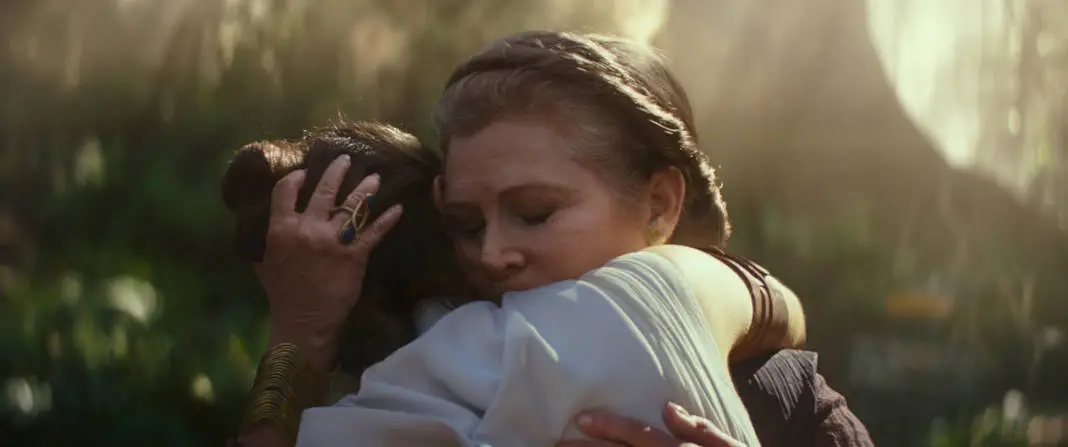
All of that stated, the reality is there is just not much that can be said about The Rise of Skywalker because there’s no idea animating it beyond “please don’t hate me.” It is the cinematic equivalent of the new droid character D-0, timidly rolling backward and forward in reaction to the cues of its audience. Though its thematic core seems to be “the role of the Jedi is to confront fear,” it is a philosophy the film refuses to adopt.
This is not what Star Wars was, but this is what Star Wars is.
From the moment old spaceships and old worlds and old plots reared their collective heads in The Force Awakens, this was inevitable. Some of that is done away with throughout the sequel series as it had to be, but nothing truly foundational, and it’s hard to imagine that will ever be the case as this is no longer the milieu of an auteur, and it shows. That doesn’t mean the watchword of the series should be WWLD beyond the general notion of avoiding repetition. The old requirement to grow and change does mean the aesthetic and foundational choices of the saga should be challenged and changed, but changing them into something reminiscent of everything around them isn’t really change.
None of this should be surprising, not the least, as it is the destination so heavily pointed to by the inward-looking nature of The Force Awakens. It’s a franchise equilibrium that the James Bond series — long Star Wars’ closest comparison as a cultural force — has managed for an even longer period of time. It suggests Star Wars in its current form can and will probably go on and on and on, for better and for worse.
The king is dead. Long live the king.
Rating: 6 out of 10 (Buy The Rise of Skywalker Products at Amazon.com)
BACK TO THE BEGINNING: STAR WARS: EPISODE IV A NEW HOPE
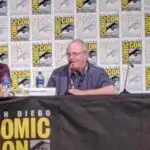
Joshua Starnes has been writing about film and the entertainment industry since 2004 and served as the President of the Houston Film Critics Society from 2012 to 2019. In 2015, he became a co-owner/publisher of Red 5 Comics and, in 2018, wrote the series “Kulipari: Dreamwalker” for Netflix. In between, he continues his lifelong quest to find THE perfect tomato soup and grilled cheese sandwich combination.
